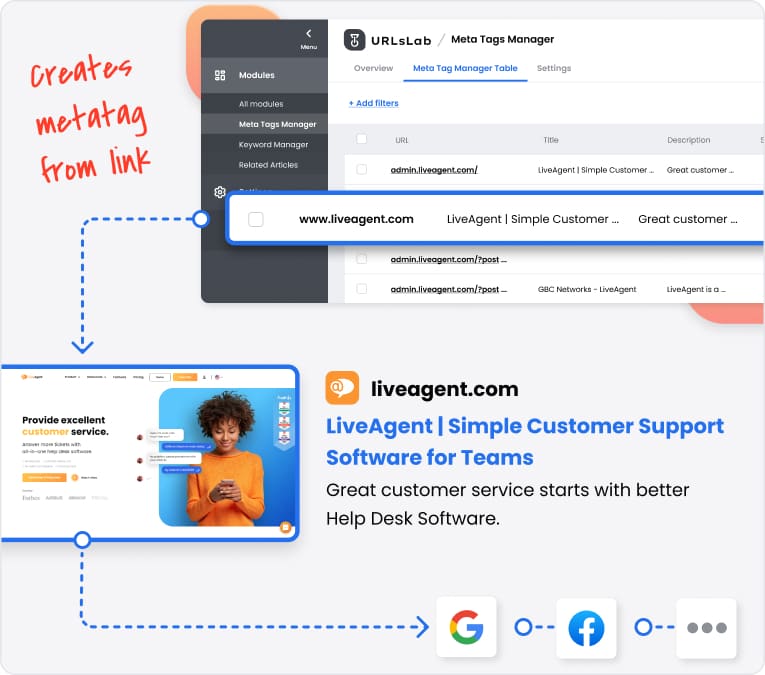Alt text
Alt text is a written description for images in HTML, improving accessibility for visually impaired users and boosting SEO by helping search engines understand image content.
What is alt text?
Alt text, short for alternative text, serves as the contextual cornerstone to visual elements on the web. It offers wider accessibility, enhances SEO and shapes a more inclusive digital environment.
The term ‘alt text’ refers to an attribute which can be added to an HTML tag, particularly the image (img) tag. It provides a written description of the image’s content, making it accessible to those who cannot see it. Alt text serves as essential metadata that communicates the purpose, appearance and function of an image on a webpage. Let’s delve into the world of alt text, illuminating its importance, varieties, practical examples and valuable tips.
As search engines are unable to ‘see’ images and ‘read’ their content like human eyes, they rely heavily on alt text to comprehend the image context. Alt text fulfills this need, aiding search bots in indexing the images precisely while enhancing website performance in SERP (Search Engine Results Page).
Alt text has a significant role in shaping a more inclusive internet by bridging the gap between visual content and visually impaired users. It aids screen readers to narrate the description of images, enhancing the web browsing experience for individuals with sight limitations.
Why is alt text important?
Enhances accessibility
Alt text is an essential web accessibility tool ensuring equal access to information despite any physical limitation. Visually impaired users relying on screen readers can comprehend the conveyed content through the alt text.
Boosts SEO
Alt text improves SEO score by allowing search engines like Google to index the website’s images accurately. Good alt text directly contributes to better organic visibility and online ranking.
Rescue mechanism
When an image fails to load due to any technical issues, alt text displays the descriptive text in place of the image, ensuring that users still receive the intended information.
Types of alt text
Alt text can be categorized based on the image content it represents. There are three common types: functional, descriptive, and keyword-optimized alt text.
Functional alt text is used for images that serve a specific function, like a submit button or a link to another page. Descriptive alt text provides a description of an image that conveys significant information. It effectively communicates the message of the image to the user. Finally, keyword-optimized alt text is employed for branding or SEO purposes, where the text involves relevant keywords without compromising the image’s description.
Choosing the right type of alt text depends on the image’s actual purpose and context within the web content.
Examples of alt text
Functional alt text
Alt= “Submit registration form.”
Descriptive alt text
Alt= “Man walking a dog in the park.”
Keyword-optimized alt text
Alt= “Apple iPhone 12 in white.”
Handy tips about alt text
Mastering the art of writing good alt text is crucial for any SEO professional, digital marketer, blogger, or website owner. Here are some handy tips:
Be descriptive
The alt text should accurately describe what is in the image. Aim to provide context and highlight key information.
Keep it concise
Avoid lengthy descriptions. An ideal alt text should be clear, concise, and to the point.
Utilize keywords strategically
Alt text provides an opportunity for SEO enhancement. Incorporate relevant keywords strategically, but avoid keyword stuffing.
Conclusion
Alt text serves as the digital bridge that connects visual elements with users who cannot view them, enhances SEO, and serves as a lifeline when image loading fails. Understanding the different types of alt text allows you to employ them appropriately based on the image’s purpose. Real-world examples and the provided tips aim to guide you in effectively leveraging alt text in your digital journey.
As we step into an increasingly digital future, we should not forget about inclusivity. Alt text helps us ensure that the web remains a welcoming place for everyone.
With this comprehensive overview, a whole new perspective of alt text is now open to users, prompting website owners, bloggers, and digital marketers better engage their audience and improve their site’s online visibility.
Frequently asked questions
- What happens if I don’t use alt text?
If you don’t use alt text, you miss an opportunity to improve your website’s SEO, accessibility for visually impaired users, and user-experience when an image fails to load.
- Is it necessary to add alt text to all images?
It depends on the image’s function. If the image is purely decorative and adds no information, it’s acceptable to leave it blank. However, for content-rich images, alt text is essential.
- How long should alt text be?
Alt text should be clear and concise, accurately describing the image without being overly lengthy or detailed.
Enhance Your Website with Better Alt Text
Improve accessibility and SEO by mastering the art of writing effective alt text for your website's images.


